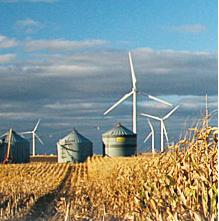Wall Street Journal
In this year’s great energy debate, Democrats describe a future when the U.S. finally embraces the anything-but-carbon avant-garde. It turns out, however, that when wind and solar power do start to come on line, they face a familiar obstacle: environmentalists and many Democrats. To wit, the greens are blocking the very transmission network needed for renewable electricity to move throughout the economy. The best sites for wind and solar energy happen to be in the sticks—in the desert Southwest where sunlight is most intense for longest, or the plains where the wind blows most often. To exploit this energy, utilities need to build transmission lines to connect their electricity to the places where consumers actually live. In addition to other technical problems, the transmission gap is a big reason wind only provides two-thirds of 1% of electricity generated in the U.S., and solar one-tenth of 1%.
Only last week, Duke Energy and American Electric Power announced a $1 billion joint venture to build a mere 240 miles of transmission line in Indiana necessary to accommodate new wind farms. Yet the utilities don’t expect to be able to complete the lines for six long years—until 2014, at the earliest, because of the time necessary to obtain regulatory approval and rights-of-way, plus the obligatory lawsuits. In California, hundreds turned out at the end of July to protest a connection between the solar and geothermal fields of the Imperial Valley to Los Angeles and Orange County. The environmental class is likewise lobbying state commissioners to kill a 150-mile link between San Diego and solar panels because it would entail a 20-mile jaunt through Anza-Borrego state park. “It’s kind of schizophrenic behavior,” Arnold Schwarzenegger said recently. “They say that we want renewable energy, but we don’t want you to put it anywhere.”
Wind power has also become contentious in oh-so-green Oregon, once people realized that transmission lines would cut through forests. Transmissions lines from a wind project on the Nevada-Idaho border are clogged because of possible effects on the greater sage grouse. Similar melodramas are playing out in Arizona, the Dakotas, the Carolinas, Tennessee, West Virginia, northern Maine, upstate New York, and elsewhere.
In other words, the liberal push for alternatives has the look of a huge bait-and-switch. Washington responds to the climate change panic with multibillion-dollar taxpayer subsidies for supposedly clean tech. But then when those incentives start to have an effect in the real world, the same greens who favor the subsidies say build the turbines or towers somewhere else. The only energy sources they seem to like are the ones we don’t have. Read more here.





